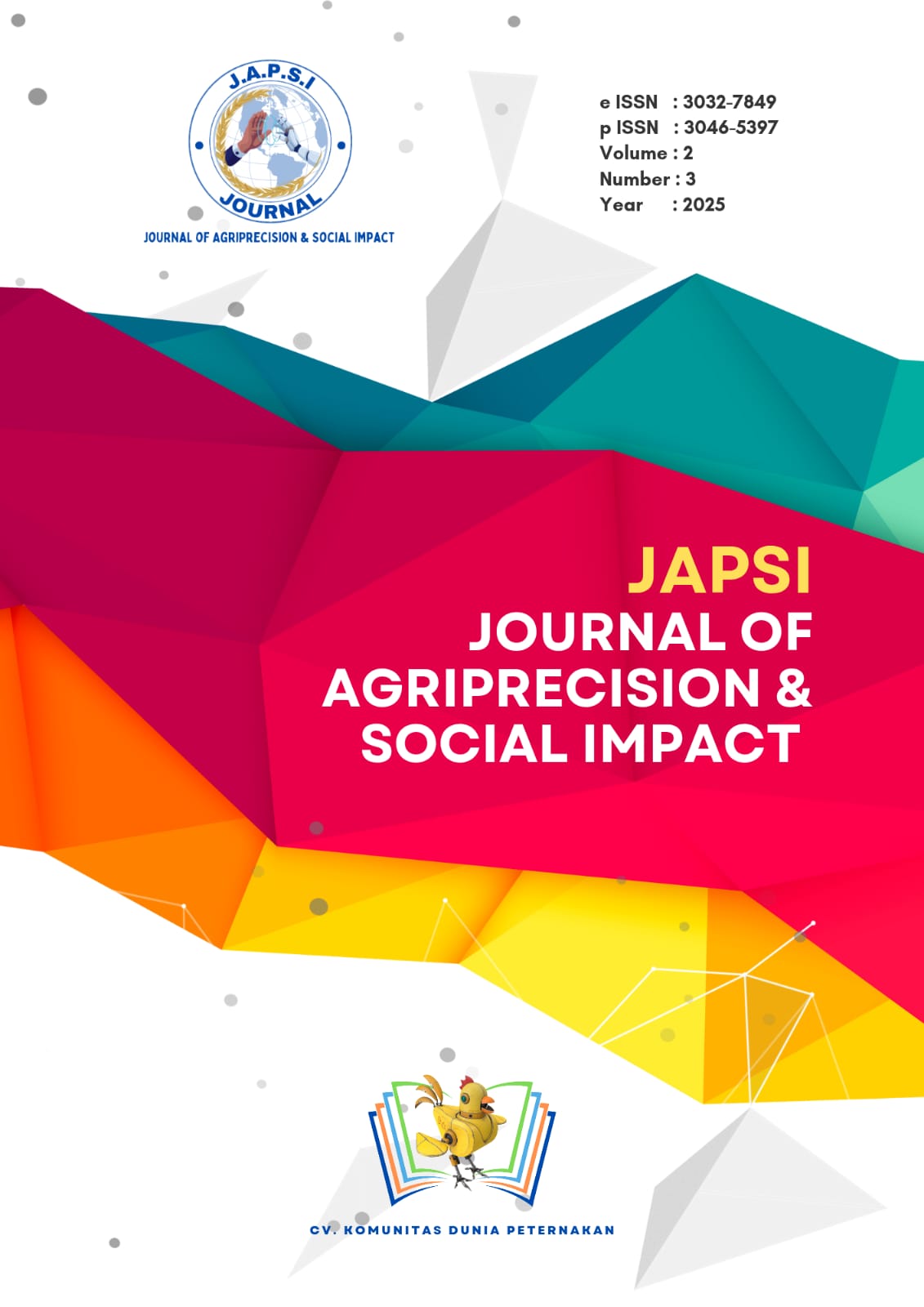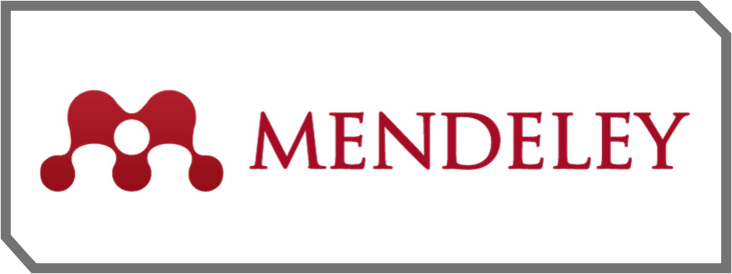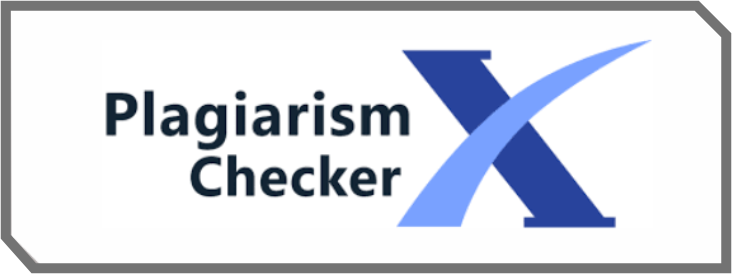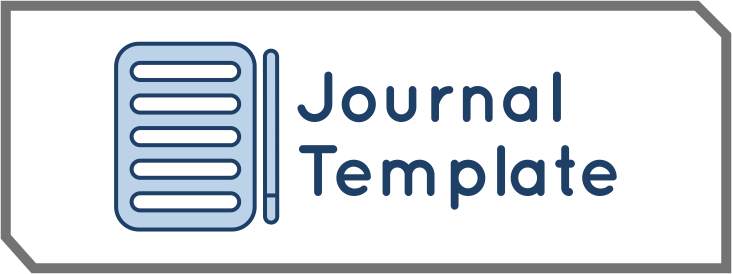Proximate Analysis of Milk-Based Jelly Candy with Different Bee Pollen Concentrations
DOI:
https://doi.org/10.62793/japsi.v2i3.77Keywords:
Bee pollen, Functional food, Milk jelly candyAbstract
This study aimed to evaluate the effect of bee pollen addition on the chemical composition of cow’s milk–based jelly candy. Bee pollen is a natural product rich in proteins, minerals, and bioactive compounds, which may enhance the nutritional value of food products. The research was conducted at the Dairy Technology Laboratory, Department of Animal Product Technology, Faculty of Animal Science, Universitas Brawijaya, from June to August 2025. The research method used was a laboratory experiment using Complete Randomized Design (CRD) ANOVA with 4 treatments and 4 replications. If different results were obtaindes between treatments, Duncan’s Multiple Range Test (DMRT) was continued. Four treatments were applied: T0 (control, without bee pollen), T1 (6%), T2 (12%), and T3 (19%). The results demonstrated that bee pollen supplementation had a highly significant effect (P<0.01) on the protein content (Kjeldahl method), moisture content (Gravimetri method), ash content (Dry Ashing method), and carbohydrate content (By Different method), but showed no significant effect (P>0.05) on fat content (Soxhlet method). Protein content increased from 16.83% to 19.30%, moisture content increased from 29.56% to 34.30%, while ash content exhibited a fluctuating trend. Conversely, carbohydrate content decreased from 52.90% to 45.19%. Overall, the addition of bee pollen improved the nutritional quality and functional potential of milk-based jelly candy, particularly as a natural source of protein and minerals.
References
AOAC. (2005). Official methods of analysis of AOAC International. AOAC International.
Aylanc, V., Falcão, S. I., & Vilas-Boas, M. (2023). Bee pollen and bee bread nutritional potential: Chemical composition and macronutrient digestibility under in vitro gastrointestinal system. Food Chemistry, 413. https://doi.org/10.1016/j.foodchem.2023.135597
Bertoncelj, J., Polak, T., Pucihar, T., Lilek, N., Kandolf Borovšak, A., & Korošec, M. (2018). Carbohydrate composition of Slovenian bee pollens. International Journal of Food Science and Technology, 53(8), 1880–1888. https://doi.org/10.1111/ijfs.13773
Candan, E. D., Çobanoğlu, D. N., & Temizer, İ. K. (2025). Botanical origin and antimicrobial activity of bee pollen: Natural inhibitor for foodborne pathogens. Microbial Pathogenesis, 208. https://doi.org/10.1016/j.micpath.2025.107978
Conte, P., Del Caro, A., Balestra, F., Piga, A., & Fadda, C. (2018). Bee pollen as a functional ingredient in gluten-free bread: A physical-chemical, technological and sensory approach. LWT, 90, 1–7. https://doi.org/10.1016/j.lwt.2017.12.002
Cosme-Alonso, V., Martínez-Lifshitz, M. E., & Mani-López, E. (2023). Yogurt supplemented with bee pollen: Physicochemical and sensory properties, and in vitro pollen digestibility. Journal of Agricultural, Food Science and Biotechnology, 1(3), 224–231. https://doi.org/10.58985/jafsb.2023.v01i03.27
Dhal, S., Pal, A., Gramza-Michalowska, A., Kim, D., Mohanty, B., Sagiri, S. S., & Pal, K. (2023). Formulation and Characterization of Emulgel-Based Jelly Candy: A Preliminary Study on Nutraceutical Delivery. Gels, 9(6). https://doi.org/10.3390/gels9060466
Fan, R., Shi, R., Ji, Z., Du, Q., Wang, J., Jiang, H., Han, R., & Yang, Y. (2023). Effects of homogenization and heat treatment on fatty acids in milk from five dairy species. Food Quality and Safety, 7. https://doi.org/10.1093/fqsafe/fyac069
Ghouizi, A. El, Bakour, M., Laaroussi, H., Ousaaid, D., El Menyiy, N., Hano, C., & Lyoussi, B. (2023). Bee Pollen as Functional Food: Insights into Its Composition and Therapeutic Properties. In Antioxidants (Vol. 12, Issue 3). MDPI. https://doi.org/10.3390/antiox12030557
Giampieri, F., Quiles, J. L., Cianciosi, D., Forbes-Hernández, T. Y., Orantes-Bermejo, F. J., Alvarez-Suarez, J. M., & Battino, M. (2022). Bee Products: An Emblematic Example of Underutilized Sources of Bioactive Compounds. In Journal of Agricultural and Food Chemistry (Vol. 70, Issue 23, pp. 6833–6848). American Chemical Society. https://doi.org/10.1021/acs.jafc.1c05822
Haroune, L., Saibi, S., Rabat, I., Loranger, Y., & Tissier, M. (2025). Multidimensional assessment of nutritional composition, contaminants and biological properties of bee pollen. Applied Food Research, 101223. https://doi.org/10.1016/j.afres.2025.101223
Jang, H. J., Lee, N. K., & Paik, H. D. (2024). Overview of Dairy-based Products with Probiotics: Fermented or Non-fermented Milk Drink. In Food Science of Animal Resources (Vol. 44, Issue 2, pp. 255–268). Korean Society for Food Science of Animal Resources. https://doi.org/10.5851/KOSFA.2023.E83
Kilic-Akyilmaz, M., Ozer, B., Bulat, T., & Topcu, A. (2022). Effect of heat treatment on micronutrients, fatty acids and some bioactive components of milk. In International Dairy Journal (Vol. 126). Elsevier Ltd. https://doi.org/10.1016/j.idairyj.2021.105231
Kolenda, M., & Sitkowska, B. (2021). The polymorphism in various milk protein genes in Polish holstein-friesian dairy cattle. Animals, 11(2), 1–8. https://doi.org/10.3390/ani11020389
Li, Q., Zhang, W., Zhou, E., Tao, Y., Wang, M., Qi, S., Zhao, L., Tan, Y., & Wu, L. (2023). Integrated microbiomic and metabolomic analyses reveal the mechanisms by which bee pollen and royal jelly lipid extracts ameliorate colitis in mice. Food Research International, 171. https://doi.org/10.1016/j.foodres.2023.113069
Miranda, J. S., Costa, B. V., de Oliveira, I. V., de Lima, D. C. N., Martins, E. M. F., de Castro Leite Júnior, B. R., Almeida do Nascimento Benevenuto, W. C., Campelo de Queiroz, I., Ribeiro da Silva, R., & Martins, M. L. (2020). Probiotic jelly candies enriched with native Atlantic Forest fruits and Bacillus coagulans GBI-30 6086. LWT, 126. https://doi.org/10.1016/j.lwt.2020.109275
Mutlu, C., Tontul, S. A., & Erbaş, M. (2018). Production of a minimally processed jelly candy for children using honey instead of sugar. LWT, 93, 499–505. https://doi.org/10.1016/j.lwt.2018.03.064
Nemś, A., Lachowicz-Wiśniewska, S., Kapusta, I. T., Miedzianka, J., Kita, A., & Carbonell-Barrachina, Á. A. (2025). Bee pollen as a source of phenolic compounds in potato snacks. Scientific Reports, 15(1). https://doi.org/10.1038/s41598-025-09776-4
Ozcan, B. E., Karakas, C. Y., & Karadag, A. (2024). Application of purple basil leaf anthocyanins-loaded alginate-carrageenan emulgel beads in gelatin-based jelly candies. International Journal of Biological Macromolecules, 277. https://doi.org/10.1016/j.ijbiomac.2024.134547
Ryntathiang, I., Panchatcharam, L., Vilvasekaran, M. S., Behera, A., Prasad, M., Chandrasekaran, Y., & Jothinathan, M. K. D. (2025). Bee pollen derived cobalt nanoparticles: Green synthesis, multifunctional bioactivity and in silico evaluation of phytochemicals. Inorganic Chemistry Communications, 182. https://doi.org/10.1016/j.inoche.2025.115425
Sana, S. H. A., & Manal, A. E.-G. (2023). The Effect of Packaging Materials on The Quality of Children’s Jelly Candies with Artificial and Natural Color. Food Technology Research Journal, 1(1), 66–80. https://ftrj.journals.ekb.eg/
Sharma, A., Thakur, A., & Nanda, V. (2025). Impact of bee pollen cell-wall disrupting techniques on the structural integrity, functional attributes, and nutritional quality of bee pollen protein isolates for food application. International Journal of Biological Macromolecules, 305. https://doi.org/10.1016/j.ijbiomac.2025.141179
Silveira, M. F. da, Efraim, P. D. P., Silva, M. J. V., de Aro, J. das N., Fadini, A. L., Queiroz, G. de C., Montenegro, F. M., & Queiroz, M. B. (2025). Improving the nutritional profile of jelly candies. Applied Food Research, 5(2). https://doi.org/10.1016/j.afres.2025.101099
Teixeira-Lemos, E., Almeida, A. R., Vouga, B., Morais, C., Correia, I., Pereira, P., & Guiné, R. P. F. (2021). Development and characterization of healthy gummy jellies containing natural fruits. Open Agriculture, 6(1), 466–478. https://doi.org/10.1515/opag-2021-0029
Yadeta, G. L., Degaga, E. G., & Merti, A. A. (2024). Proximate Composition and Antioxidant Activity of Honey Bee Collected Pollen in the Main Flowering Season, in West Shewa Zone, Central Ethiopia. Journal of Apicultural Science, 68(1), 19–33. https://doi.org/10.2478/jas-2024-0006
Zhang, C., Tao, J.-L., Sutar, P. P., Fan, Y., Fang, X.-M., Ni, J.-B., Tian, B., & Xiao, H.-W. (2025). Comparative study of hot air and vacuum drying on drying behavior, phytochemical composition, browning, and microstructural changes in bee pollen: The role of oxygen, temperature and vacuum. Journal of Future Foods. https://doi.org/10.1016/j.jfutfo.2025.06.001
Downloads
Published
How to Cite
Issue
Section
License
Copyright (c) 2025 Journal of Agriprecision & Social Impact

This work is licensed under a Creative Commons Attribution-ShareAlike 4.0 International License.







